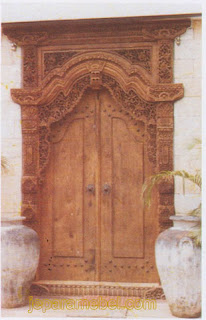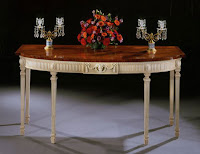Despite being a popular material for in- and out-door furniture most people know little about Rattan. On the following pages we give you some "background" information about Rattan.
Rattam in Asia
There are indications that rattan has been used since the early days of mankind for the production of furniture, though no exact historical data exists. It was originally exported from Indonesia, where it predominately grows, and eventually reached the shores of China. There, skilled craftsman built not only furniture but also baskets and other household items.

It is widely accepted that from China rattan then entered Japan where, within a short time, it became very popular too. It was the Japanese who honed the art of modern rattan furniture. Several production centers developed in Japan and rattan furniture was and remains highly popular in Japanese households.
Singapore, due to its proximity to Indonesia and the availability of skilled craftsmen from China, developed into South East Asia's rattan furniture production center. Until the late 1980s, Singapore was probably the biggest exporter of rattan furniture. Manufacturing came to a sudden end when Indonesia's government decided to stop exporting raw rattan. However, a lot of rattan is still traded and exported.
Rattan in America
It is thought that rattan entered America through colonists who brought wicker and basket chairs with them. Paul Frankl was one of the first major designers to use rattan in modern design. Frankl's book, "Space For Living," shows several rattan items, including a square-pretzel sofa. Because this design was extensively copied by other rattan manufacturers, it is often attributed to Frankl.

It was not unusual for rattan furniture to be used in the dining room or intermixed with upholstered furniture. A wide variety of furniture pieces were produced in the 1930s and 1940s, such as sofas, (both one-piece and sectional), sofa beds, chairs, curved couches, coffee tables, screens, desks, beds, dining tables and chairs, sideboards, servers, bookcases, nightstands, dressers and wall shelves.
Rattan for American produced furniture usually originates in the Philippines which, after Indonesia, is the 2nd biggest rattan exporter.
Rattan In Europe
The British and the Dutch, who held large colonies in South East Asia, were the early traders of rattan. Europe generally imported rattan as finished furniture from Singapore, Malaysia or Indonesia. Europe itself did not produce any significant rattan furniture despite its popularity.
Rattan furniture is still very popular in Europe and demand for well crafted and well designed pieces remains constantly high.
Rattan In Indonesia
In Indonesia, rattan is harvested in the jungles of Borneo, Sulawesi and Sumatra. Trading has been mainly concentrated on the island of Java. Over time Cirebon, a port city about 250 km east of Jakarta, Indonesia's capital city, established itself as the rattan trade center and subsequent rattan manufacturing center. It was probably Cirebon' s proximity to the island of Borneo that made it more favorable for rattan shipments than the bigger harbors of Jakarta and Surabaya.
Until 1987, almost all rattan was exported as a raw material to overseas markets and only a small portion of lower quality rattan remained in Cirebon. This was turned into furniture and house-hold products by small home-industries. During that time Indonesia only exported finished rattan goods, with relatively simple designs, on a small scale
When in 1987 Indonesia's government decided to stop exporting raw rattan, demand for finished rattan furniture soared and gave an impetus to Cirebon's rattan Industry. It was some while before larger factories were established and even today many rattan furniture exporters outsource their production to home industries and act only as intermediaries.
As a consequence, rattan furniture from Cirebon is sometimes considered to be inferior to rattan furniture from other regions in South East Asia, such as Thailand and the Philippines. Only few factories currently do their entire production in-house. Even fewer factories exist that employ their own designers, who are often highly skilled expatriates from all corners of the world.
Biology and Processing
Rattan is a member of the palm family ( the genus clamu). Several hundred species flourish in the rattan plantation of India, Southeast Asia, China and Indonesia. Rattan grows as a long slender stem, similar to a vine, up to 200 meters in length according to the species. Yet it maintains an almost uniform diameter throughout its length. It has an inner core and is not hollow like bamboo.
It is one of nature's strongest materials. The outer portion of the stem is extremely hard and durable, while the inner portion of the stem is softer and somewhat porous and not hollow like bamboo. It will not splinter or break, is extremely resilient and is ideal for the making of furniture.
There is no harvesting season for rattan as it grows year round. Harvesting can be difficult due to the topography and inaccessibility of the jungle. The harvested rattan is cut into 12-15 foot lengths and tied into large bundles to make the journey from the jungle to a processing area.
There the workers remove the bark and cut the lengths into thin strips to be used in cane seats and chair backs. The pithy interior is then cut into reed for use in wickerwork. Because rattan is extremely strong and can be fastened as securely as wood, the entire pole is used to make furniture. This looks like bamboo but is much stronger.
When heated with steam or a blowtorch, rattan becomes very pliable and can be bent into a variety of shapes without cracking.
Finished rattan furniture is as strong as steel and is nearly indestructible. It requires no particular maintenance and is extremely durable. Having been fumigated at the factory, it is also virtually immune against rodents, unlike bamboo which deteriorates relatively quickly.
Even if the condition of the furniture is in disrepair, most items can be restored to their original condition.
Comparison between Rattan and Bamboo
Bamboo is a member of the grass family, with stalks that grow up to 100 feet. Like rattan, bamboo has a tough outer coat that is stripped off to make cane, and is sometimes used as framing for wickerwork.
The stalks are also used to make furniture. However, because bamboo is hollow, it isn't as strong as its solid cousin. And, unlike rattan, the joints of the bamboo stalk are susceptible to moisture and need to be sealed.
How to care for your rattan furniture
Rattan and wicker frames require very little maintenance. Dusting with a soft damp cloth or vacuuming with a brush attachment will keep your furniture looking good. Spills should be taken care of immediately before they harden or stain, by wiping with a damp sponge and a little detergent.
Rattan poles can easily be touched up with premium wood stains, gloss lacquers or furniture touch up pens available from local home improvement centers.
suorce : www.balagi-rattan.com






























